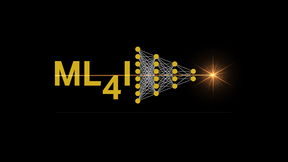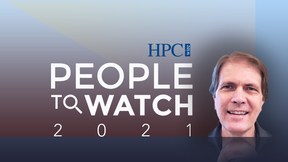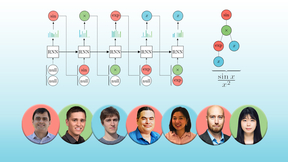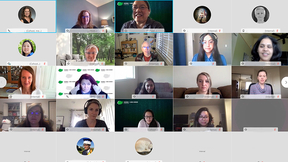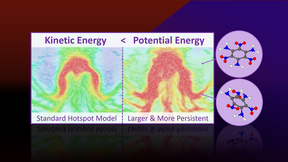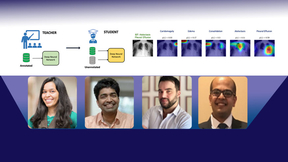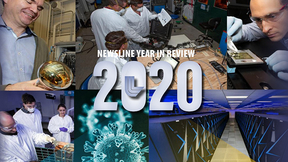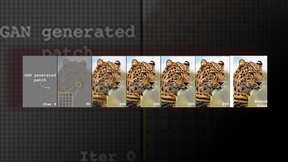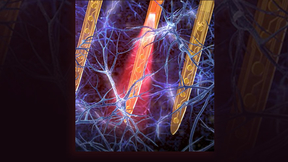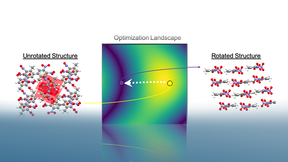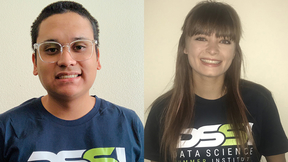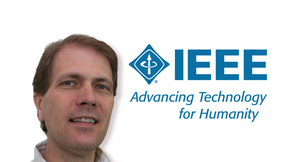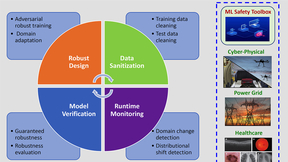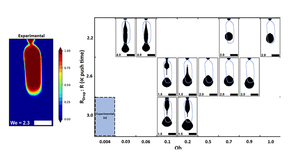Back
Computing
Lab offers forum on machine learning for industry
Lawrence Livermore National Laboratory (LLNL) is looking for participants and attendees from industry, research institutions and academia for the first-ever Machine Learning for Industry Forum (ML4I), a three-day virtual event starting Aug. 10. Pre-registrations are open for the forum, which aims to foster and illustrate the adoption of machine learning methods for…
De Supinski named one of HPCwire’s 'People to Watch'
Bronis R. de Supinski, Lawrence Livermore National Laboratory’s (LLNL) chief technology officer (CTO) for Livermore Computing (LC), is one of the top influencers in the high performance computing industry for 2021, according to HPCwire. On April 7, the publication honored de Supinski as one of its "People to Watch," a group of 14 “innovators and visionaries building and…
COVID-19 HPC Consortium reflects on past year
COVID-19 HPC Consortium scientists and stakeholders met virtually on March 23 to mark the consortium’s one-year anniversary, discussing the progress of research projects and the need to pursue a broader organization to mobilize supercomputing access for future crises. The White House announced the launch of the public-private consortium, which provides COVID-19 researchers…
Novel deep learning framework for symbolic regression
Lawrence Livermore National Laboratory (LLNL) computer scientists have developed a new framework and an accompanying visualization tool that leverages deep reinforcement learning for symbolic regression problems, outperforming baseline methods on benchmark problems. The paper was recently accepted as an oral presentation at the International Conference on Learning…
Lab event encourages growth of women in data science
Coinciding with International Women’s Day on March 8, Lawrence Livermore National Laboratory’s 4th Women in Data Science (WiDS) regional event brought women together to discuss successes, opportunities and challenges of being female in a mostly male field. The Lab’s first-ever virtual WiDS gathering attracted dozens of LLNL data scientists as well as some from outside the…
Research uncovers missing physics in explosive hotspots
Research conducted on Lawrence Livermore National Laboratory’s (LLNL) supercomputer Quartz highlights findings made by scientists that reveal a missing aspect of the physics of hotspots in TATB (1,3,5-trimamino-2,4,6-trinitrobenzene) and other explosives. Hotspots are localized regions of elevated temperature that form from shock-induced collapse of microstructural…
'Self-trained' deep learning to improve disease diagnosis
New work by computer scientists at Lawrence Livermore National Laboratory (LLNL) and IBM Research on deep learning models to accurately diagnose diseases from X-ray images with less labeled data won the Best Paper award for Computer-Aided Diagnosis at the SPIE Medical Imaging Conference on Feb. 19. The technique, which includes novel regularization and “self-training”…
Retiring Director Bill Goldstein leaves behind a rich legacy of extraordinary growth, innovation for the Lab
Nearly a year into piloting a major scientific institution through one of the most taxing and disruptive global events in modern history, outgoing Livermore Lab Director Bill Goldstein is ready for a vacation. One of Goldstein’s first orders of business following his retirement on March 1 is returning to the lush slopes, coffee plantations and sandy beaches of Kona, Hawaii…
Lab researchers explore ‘learn-by-calibration’ approach to deep learning to accurately emulate scientific process
Lawrence Livermore National Laboratory (LLNL) computer scientists have developed a new deep learning approach to designing emulators for scientific processes that is more accurate and efficient than existing methods. In a paper published by Nature Communications, an LLNL team describes a “Learn-by-Calibrating” (LbC) method for creating powerful scientific emulators that…
Kim Budil selected as director of Lawrence Livermore
Kim Budil has been named director of Lawrence Livermore National Laboratory (LLNL). Charlene Zettel, chair of Lawrence Livermore National Security, LLC (LLNS), which manages the Laboratory for the Department of Energy's (DOE) National Nuclear Security Administration (NNSA), made the announcement to Laboratory employees Jan. 28. Budil will begin her new role on March 2…
Lawrence Livermore's '2020 Year in Review'
Though 2020 was dominated by events surrounding the COVID-19 pandemic — whether it was adapting to social distancing and the need to telecommute, safeguarding employees as they returned to conduct mission-essential work or engaging in COVID-related research — Lawrence Livermore National Laboratory (LLNL) managed an exceptional year in all facets of science and technology…
Lawrence Livermore computer scientist heads award-winning computer vision research
The 2021 IEEE Winter Conference on Applications of Computer Vision (WACV 2021) on Wednesday announced that a paper co-authored by a Lawrence Livermore National Laboratory (LLNL) computer scientist received the conference’s Best Paper Honorable Mention award based on its potential impact to the field. The paper, titled "Generative Patch Priors for Practical Compressive…
LLNL develops optical capability for thin-film neural implants to look into brain activity
Combining hybrid polymer materials with microfabrication and 3D printing, Lawrence Livermore National Laboratory (LLNL) has developed an ultra-compact, lightweight and minimally invasive optoelectronic neural implant that could be used for long-term studies of brain activity. The new implantable devices are built upon a new platform LLNL researchers are calling POEMS …
Molecular crystal structures pack it in
Whether organic chemists are working on developing new molecular energetics or creating new blockbuster drugs in the pharmaceutical industry, each is searching how to optimize the chemical structure of a molecule to attain desired target properties. Part of that optimization includes a molecular crystal’s packing motif, a perceived pattern in how molecules orient relative…
Lab garners five commercialization grants
Lawrence Livermore National Laboratory (LLNL) scientists and engineers have put together another first-rate year securing major grants through the Department of Energy’s (DOE) Technology Commercialization Fund (TCF). “We did quite well, although the diversity of the research projects funded wasn’t as broad as last year,” said Rich Rankin, the director of the Lab’s…
Lab hosts two rising seniors through fellowships
Early this spring, the Livermore Lab Foundation (LLF), in partnership with University of California, Merced, awarded two rising seniors, Jose Garcia-Esparza and Teagan Zuniga, one-year $15,000 fellowships to participate in the Lab’s Data Science Summer Institute (DSSI) and continue a part-time fellowship at the Lab for the remainder of the 2020-21 school year. The…
LLNL physicist wins Young Former Student award
Texas A&M University’s Department of Nuclear Engineering on Dec. 10 announced it has honored Lawrence Livermore National Laboratory (LLNL) physicist Kelli Humbird with its 2020-21 Young Former Student award for her work at LLNL in combining machine learning with inertial confinement fusion (ICF) research. A design physicist at LLNL, Humbird graduated from Texas A&M…
LLNL’s de Supinski earns prestigious IEEE Fellowship
IEEE, the world's largest technical professional organization, announced it has elevated Bronis de Supinski to the rank of fellow, recognizing Lawrence Livermore National Laboratory's (LLNL) Livermore Computing’s chief technology officer (CTO) for his leadership in the design and use of large-scale computing systems. The prestigious IEEE fellow distinction, which takes…
NeurIPS papers aim to improve understanding and robustness of machine learning algorithms
The 34th Conference on Neural Information Processing Systems (NeurIPS) is featuring two papers advancing the reliability of deep learning for mission-critical applications at Lawrence Livermore National Laboratory (LLNL). The most prestigious machine learning conference in the world, NeurIPS began virtually on Dec. 6. The first paper describes a framework for understanding…
Lab study of droplet dynamics advances 3D printing
A team of Lawrence Livermore National Laboratory (LLNL) scientists has simulated the droplet ejection process in an emerging metal 3D printing technique called “Liquid Metal Jetting” (LMJ), a critical aspect to the continued advancement of liquid metal printing technologies. In the paper, the team describes the simulating of metal droplets during LMJ, a novel process in…


